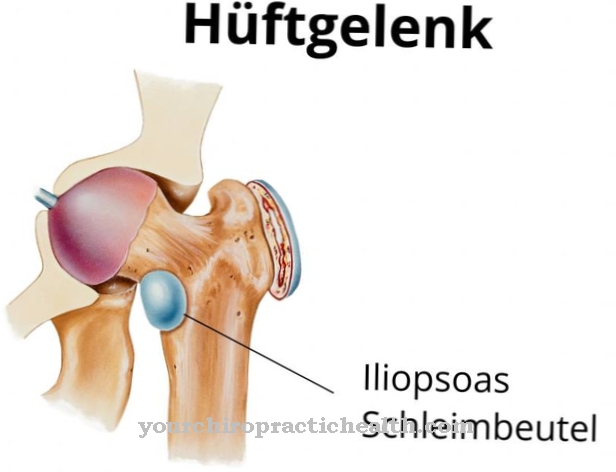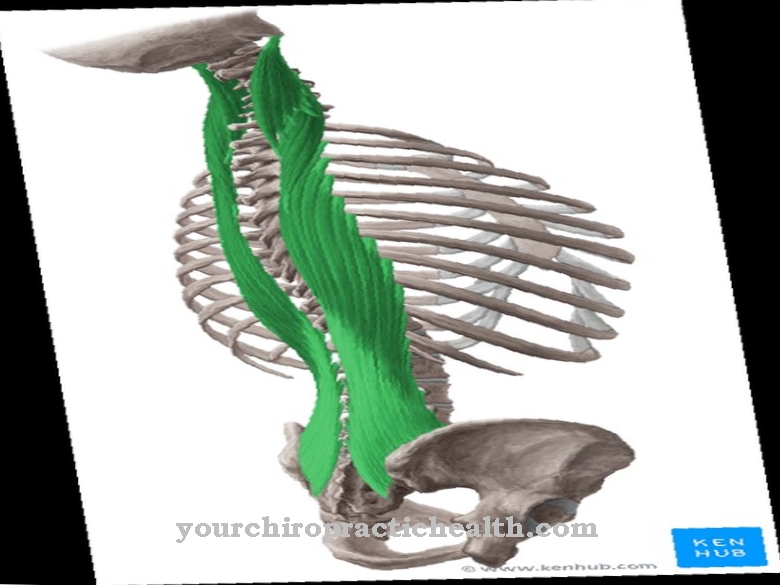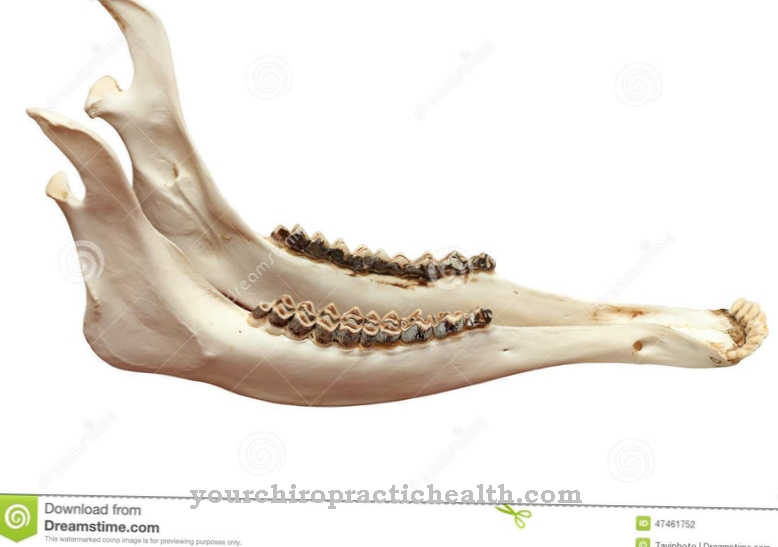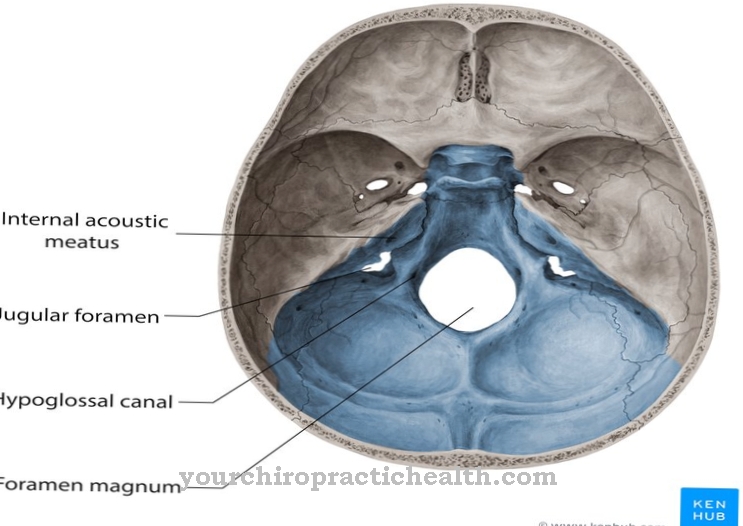The Temples are sensitive anatomical regions on the side of the head. Important nerve tracts and blood vessels run here. Complaints and abnormal sensations, especially in connection with headaches and tension in the local muscle areas, occur relatively frequently in the temporal region.
What is the temple?
"Temple" (pl. Temples; lat. Tense / pl. Tempora) is the area of the head that extends slightly pit-shaped on both sides, above the cheek, between the eye and ear. The term "temple" is commonly associated with the fact that the head of a sleeper lies on this part of the body when lying on its side.
However, there are also alternative etymological word interpretations that see the origin of the term "temple" in terms similar to earlier words in Slavic and Romance languages for "thin / thin-skinned / thin place". This interpretation refers to the thin layer of cranial bone in the area of the temples.
Anatomy & structure
According to anatomical definition, the temples comprise a larger area than is generally assumed. The visible and palpable dents on the side of the eyes, often called "temples" colloquially, only make up part of the temple region.
The temporal fossa is bounded in the lower area by the cheekbones (cheekbones, lat. Os zygomaticum), in the upper area by the frontal bone (lat. Os frontale). Towards the back of the head, the temporal region extends above the ears over the underlying sphenoid bone (Latin os sphenoidale) and the temporal bone (os temporale). The temporal fossa lies between the externally palpable bones of the skull.
Here, nerve tracts and large blood vessels run relatively unprotected directly under the skin, embedded in a (fat) tissue cushion. This position makes the temples an easily and sometimes dangerously vulnerable part of the body through external influences. The meeting of some central skull bone elements also contributes to the susceptibility of the temple to malfunction.
Function & tasks
The "temple" is only a defined anatomical region and as such does not serve any specific task. However, important blood vessels and nerves run in the temporal region. are involved in the control and circulation of the eyes and ears.
The nerves are branches and branches of central mandibular and maxillary nerves. The ear-temple nerve (Latin: auriculotemporal nerve) innervates both the temporal skin and parts of the auditory tract, the auricle and the eardrum. The zygomatic nerve (lat. Zygomatic nerve) also innervates parts of the temporal skin, as well as the zygomatic arch and the eyelids.
The temporal region is supplied with blood by two important blood vessels. The artery that supplies blood to the superficial temporal areas and other areas of the upper head is a junction of the carotid artery, the so-called superficial temporal artery (Latin arteria temporalis superficialis).
This blood vessel makes the pulse palpable in the temple area. The deep temporal artery (Latin: Arteria temporalis profunda), on the other hand, perfuses deeper structures of the temples. This includes i.a. the "temple muscle" (Latin: temporalis muscle), which, as part of the upper masticatory muscles, makes an important contribution to the chewing process.
Illnesses & ailments
In the sensitive area of the temples there are often symptoms and abnormal sensations. Obvious causes are initially external influences such as pressure and shocks on the temple region, which can easily lead to bruises and sometimes dangerous injuries to the unprotected tissue. Tissue swelling obstructs blood flow or puts pressure on the temporal nerves, which can cause pain.
Often headaches - especially migraines, cluster and tension headaches - are localized in the temple region or can radiate there. The causes and triggers of these headache types have not yet been precisely clarified and can vary from person to person. The associated pain in the temples is felt very differently in type and intensity.
The symptoms range from mild pressure pain to aggressive, severe pain (mostly in connection with cluster headaches). They can appear on one or both sides, be perceived as pulsating, dull or piercing.
Often, pain in the temple area radiates to adjacent parts of the body (eyes, ears, jaw, back of the head), or is based on pain radiating from these areas. Pain caused by overstrained eye or jaw muscles can also express itself as pain in the temples. In the so-called "Costen syndrome", for example, there is an incorrect posture of the jaw joint. This in turn often results from poorly corrected or poorly corrected bite anomalies, nocturnal teeth grinding or inflammatory joint diseases.
Muscular tension due to poor posture or mental tension can also lead to the formation of nodules in the fibers of the temporal muscle, which can trigger painful sensations. Light, circular pressure massages and acupuncture treatments can help with these complaints.
In the elderly in particular, rheumatic inflammation of the temporal arteries can hide behind symptoms in the temporal area. These are then often accompanied by other symptoms such as visual disturbances and numbness and require immediate surgical treatment in order to avoid lasting visual disturbances or strokes.













.jpg)

.jpg)
.jpg)











.jpg)